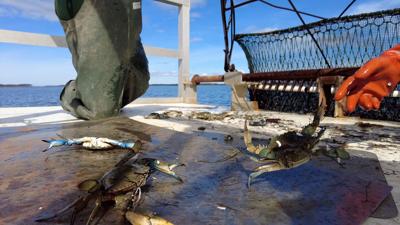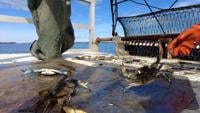TODDVILLE, MD - The annual crab count in the Chesapeake Bay holds significant implications for the upcoming year's regulations. Meaning, the final numbers from the survey essentially determine the restrictions that commercial and recreational crabbers must follow.
According to the DNR, the blue crabs bury themselves under the sand during the winter months.
"What's unique about the survey is this is the one time of year where the crabs are the most inactive. We can get a actually clear snapshot of like what is actually over wintering. Because in the summertime when they're active and very mobile, it would be quite the challenge," explained Chris Walstrum, lead biologist at DNR.
During the count, DNR biologists deploy a net, dredging it on the bottom for approximately a minute. Captain Roger Morris of the Mydra Ann, who sails the boat during each dredge, emphasized the importance of technique, stating, "If you're on the bottom, the main thing is not to bury the dredge because if you bury it and it fills up with mud then the crabs are gonna flip over top of it."
Once collected, the crabs undergo measurement, weighing, sexing, and observation for any anomalies before being released back into the water.
The survey spans several different areas of the bay and its tributaries, all week, over the course of four to five weeks. Data collected is meticulously recorded and analyzed to assess population numbers and determine fishery regulations, particularly if numbers are found to be low.
"This is a joint survey with Virginia, conducted between December and March. It's the best available science we've got to use, and it's the cornerstone of the management of the fishery," stated Heather Hayden, another biologist with DNR.
The accuracy of the survey is important as it directly impacts regulations governing crab harvesting. "Because they base everything they do in our survey in our catch limits. I crab pot in the summertime so naturally I don't want our bushel limits to go down," said Morris, emphasizing the importance of ensuring accurate data collection.
Maryland DNR biologists have completed their part of the survey and are awaiting Virginia's completion of its research and dredging before final numbers are analyzed. This analysis will inform decisions prior to the commencement of the summer crab season, ensuring sustainable management of the blue crab population.



